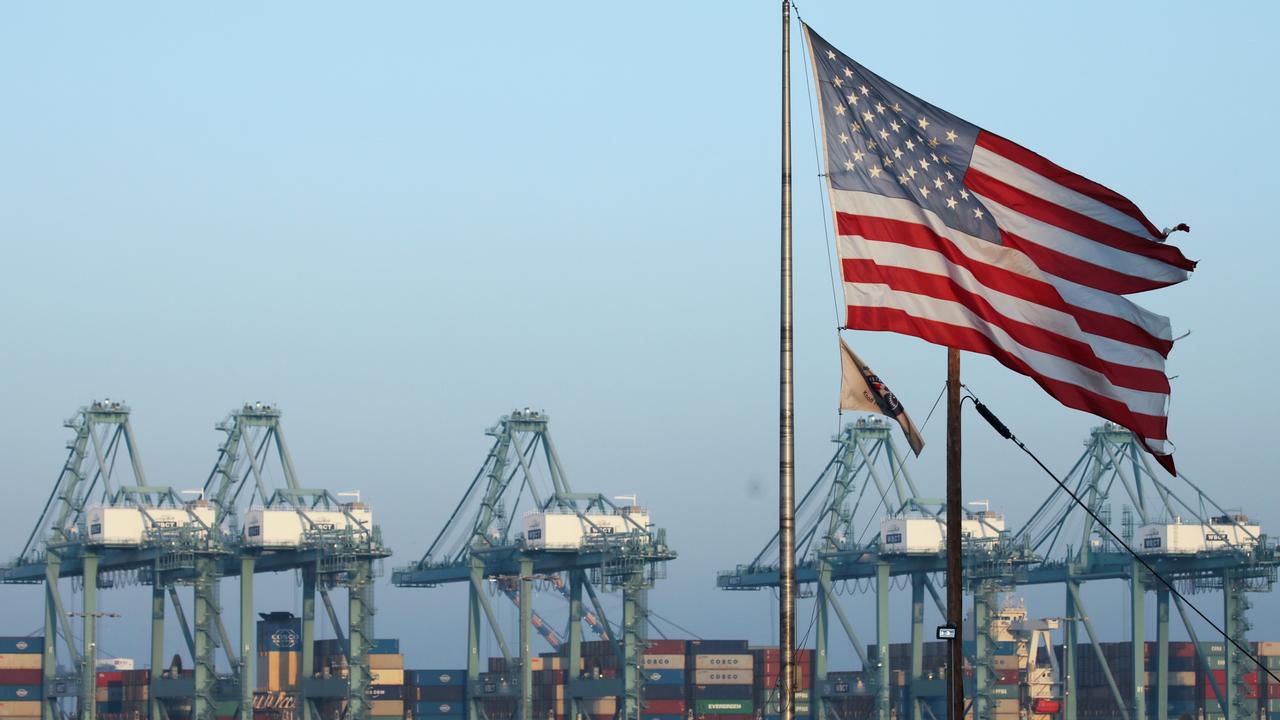Stocks are breaking new ground but the volatility is too high
Markets in the US and Australia are climbing a proverbial wall of worry but October has a reputation as one of the most volatile months of the year for stocks as the US election looms.

It’s half way through October and stock markets in the US and Australia are hitting record highs.
But October has a reputation for being a particularly volatile month and the US election looms.
The US market was gunning for its sixth weekly rise in a row; the S&P 500 hit a record high in three of the past four days after breaking above the previous record high that it reached in late September.
Encouragingly, Nvidia hit a record high daily close for the first time in four months after retreating as much as 36 per cent in that period. Nvidia has risen seven of the past nine days, 13.7 per cent month to date, 179 per cent year to date and 200 per cent in the past 12 months.
The $US3.4 trillion AI industry leader was the eighth-best performing stock in the S&P 500 and the most actively traded on Monday. Nvidia has broken out of a symmetrical triangle on the chart that could trigger a surge toward about $US190 – if it can break the all-time high at $US140.76.
Reports from JPMorgan and Wells Fargo came in better than expected on Friday.
With the expectations “bar” set low for US earnings, hopes are high in the market that results from Citi, BofA, Goldman Sachs, Morgan Stanley and Netflix this week also beat estimates.
From the middle of next week the so-called “Magnificent Seven” stocks will start to report and the focus will again be on whether the AI leaders like Nvidia are able to shoot the lights out by as much as they normally do.
The Australian market finally started to catch up with the US, with the ASX 200 index taking out its September 30 peak on Tuesday as it soared 0.8 per cent to a record high close of 8318.4.
It showed all the signs of a classic “melt-up”, albeit on light volume, as gains broadened throughout the day and buyers piled into some of this year’s favourites like CBA, Macquarie, WiseTech and REA.
Positively, NAB economists brought forward the timing of the first interest rate cut that they expect from the Reserve Bank from May to February.
With oil prices diving as the Middle East crisis cooled, China’s stock market holding up despite the latest disappointment on fiscal policy over the weekend (China’s CSI 300 did fall 2 per cent and the Hang Seng fell 4 per cent after Australian market closed on Tuesday), and the US market so far proving resilient to the bond market sell-off caused a repricing of interest rate expectations after stronger-than-expected data – stocks were “climbing a wall of worry”.
However, US stock market volatility is simply too high for a sustained melt-up.
Either volatility needs to plunge or the stock market has to take a breather from here.
As of Monday the VIX index of implied volatility in S&P 500 futures was 19.7 per cent.
That’s not far above its long-term average of 19.35 per cent.
But with the S&P 500 hitting record highs day after day, the VIX should be at about 12-14 per cent.
So far this year the VIX has averaged 15.2 per cent but even that lower level has been pushed up by periods of extreme volatility like when the VIX spiked to 65.73 per cent in early August during the US recession fear and consequent unwind of the yen carry trade in early August.
That was an S&P 500 buy signal. The current level of the VIX is not.
With all the event risk around the Middle East and US elections as well as the risk of a damaging rise in bond yields. From late April to mid-September the US stock market had a distinct tailwind from falling bond yields as the 10-year Treasury yield fell from 4.70 to 3.60 per cent.
US economic resilience is a good thing, but the 10-year Treasury yield is now back up to 4.10 per cent and if it keeps shooting higher amid signs of “no-landing”, parts of the US share market that have benefited from falling bond yields will come unstuck, even if AI stocks hold up.



